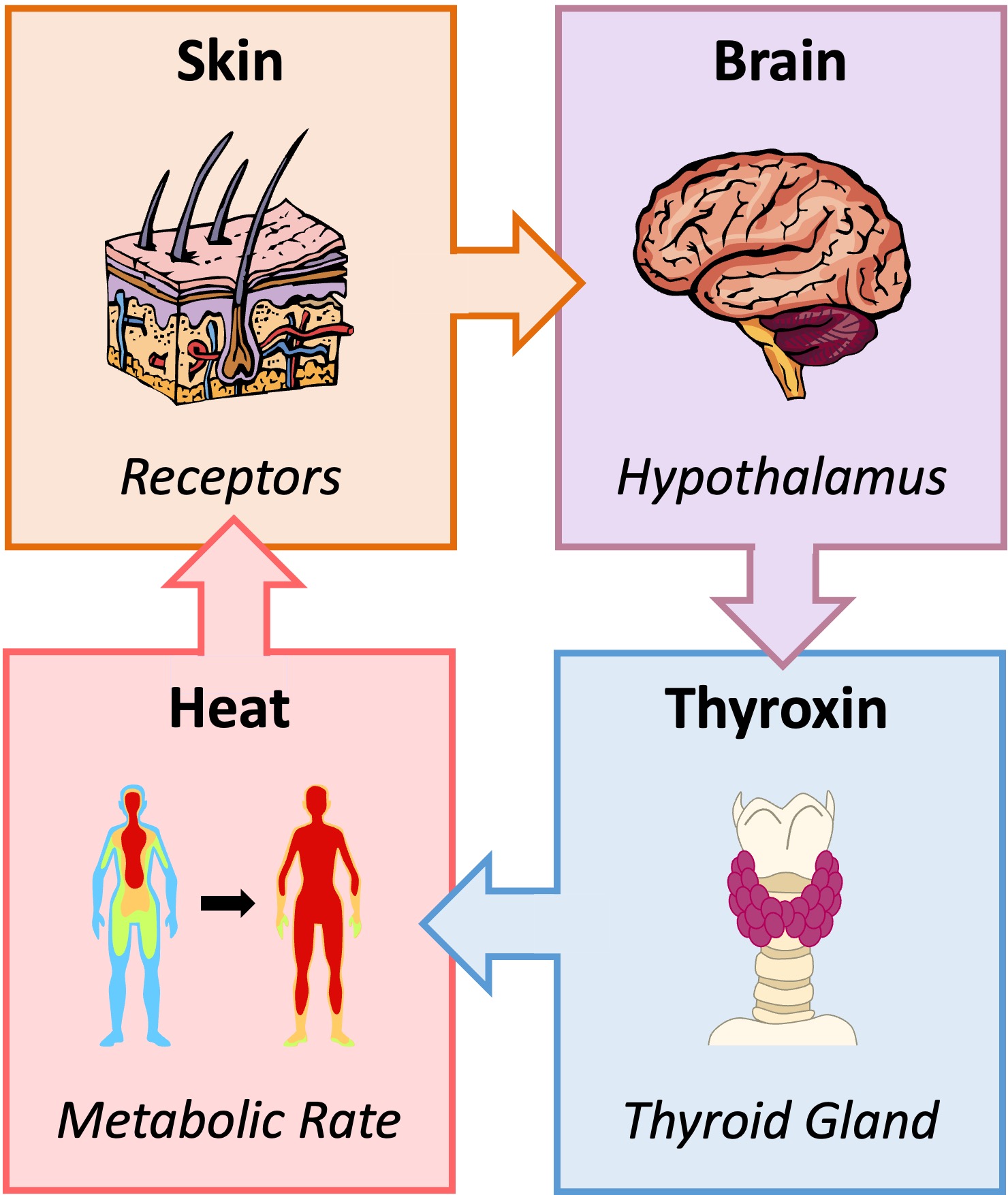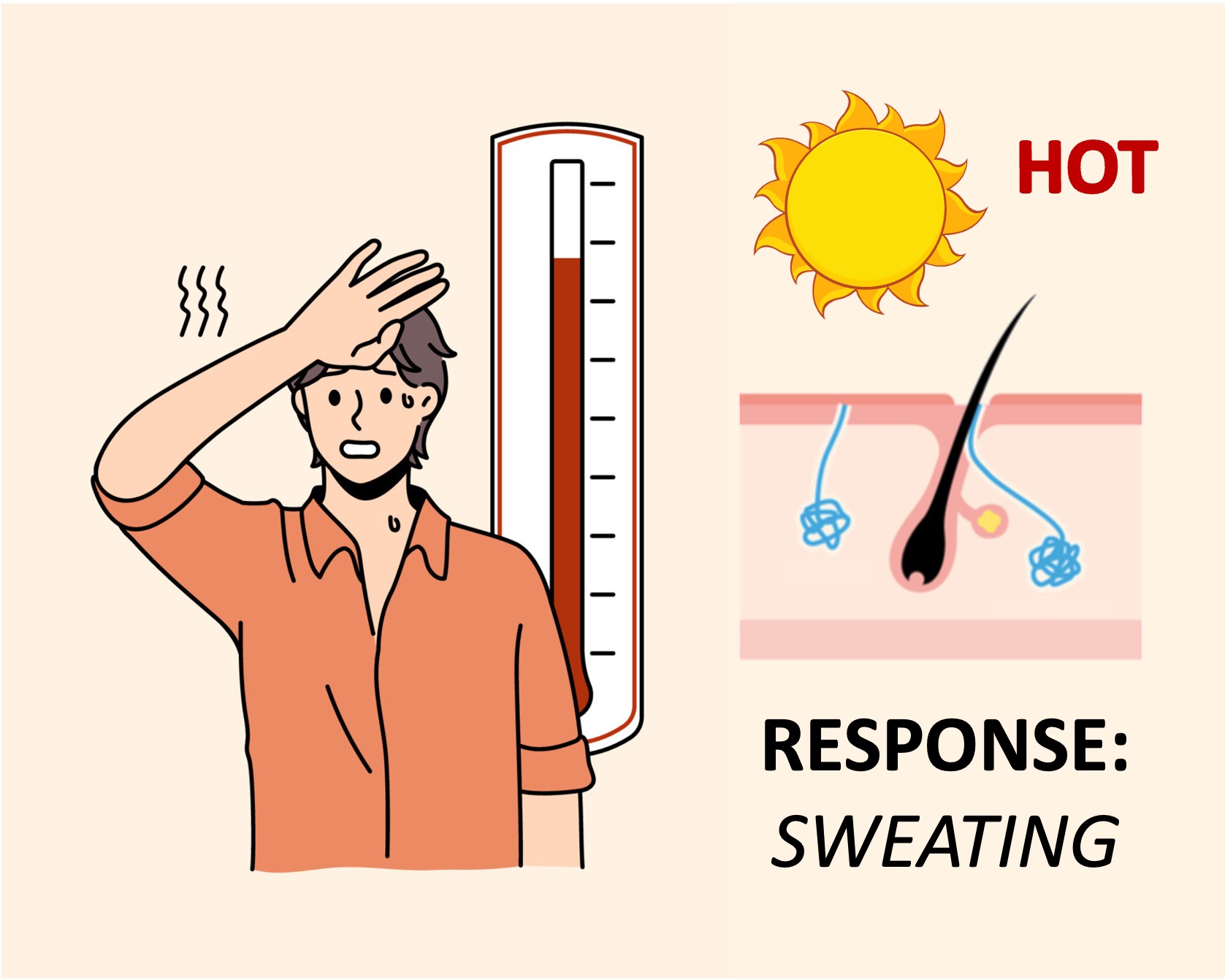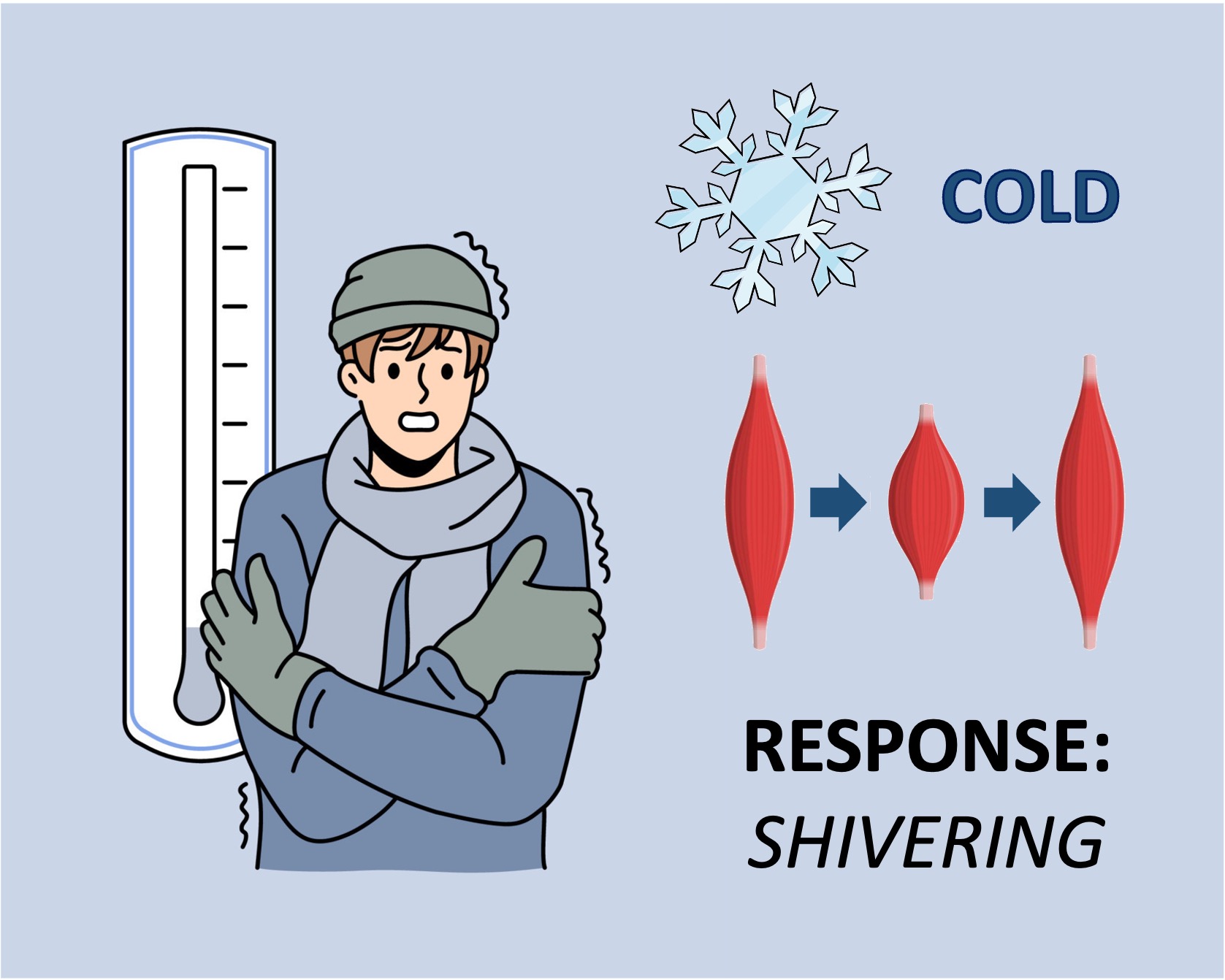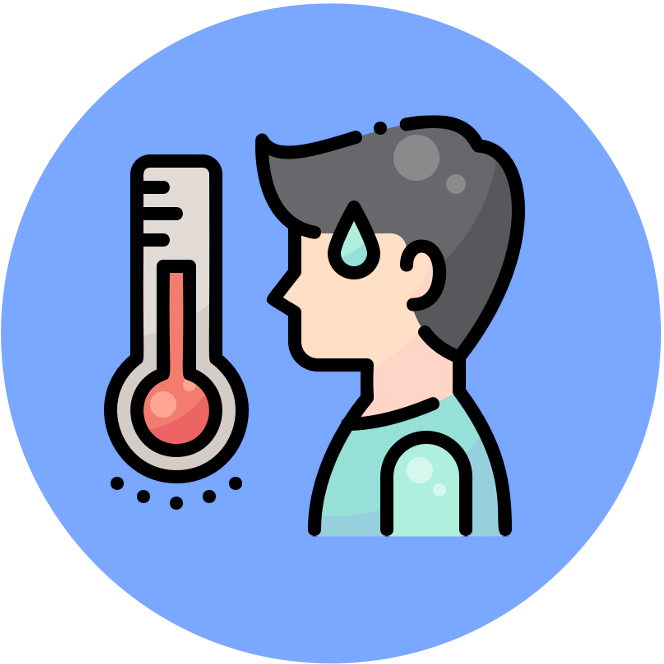

Thermoregulation
Thermoregulation describes the physiological processes by which warm-blooded animals (homeotherms) maintain a stable core body temperature
-
Peripheral thermoreceptors in the skin detect external temperature fluctuations and relay this information to the hypothalamus
-
The hypothalamus stimulates the pituitary gland to release TSH (thyroid stimulating hormone), which triggers the release of thyroxin from the thyroid gland
The primary role of thyroxin is to increase the basal metabolic rate (by stimulating carbohydrate and lipid metabolism)
-
A consequence of increasing metabolic activity is the production of heat – hence thyroxin helps to control body temperature
When body temperature drops, metabolic activity is increased via thyroxin to create heat and raise the core body temperature
When body temperature rises, thyroxin production is reduced to decrease metabolic activity and lower the core body temperature
Thermoregulation


Thermoregulation Mechanisms
In addition to regulating metabolic activity, animals possess a range of other physiological and behavioural responses to maintain body temperatures
-
Physiological responses refer to the biological processes that regulate heat production, while behavioural responses refer to the conscious actions taken by the organism to control temperature fluctuations
Mechanisms by which homeotherms may function to heat the body if internal temperatures drop include:
-
Vasoconstriction – Skin arterioles constrict to move blood away from the body surface and retain the heat carried within the blood
-
Shivering – Muscles begin to shake in small movements, expending energy through metabolic activity (which produces heat)
-
Piloerection – Animals with furry coats can make their hair stand on end, trapping pockets of warm air close to the body surface
Mechanisms by which homeotherms may function to cool the body if internal temperatures rise include:
-
Vasodilation – Skin arterioles dilate to move blood closer to the body surface and allow for heat transfer (i.e. convective cooling)
-
Sweating – Sweat is released from exocrine glands, which evaporates at the cost of latent heat in the air (i.e. evaporative cooling)
-
Behavioural responses – Animals may physically remove themselves from warm environments in order to cool (e.g. burrowing)
Heating versus Cooling


Brown Adipose Tissue
Animals with brown adipose tissue are further capable of generating body heat via uncoupled respiration
-
Mitochondria possess an enzyme that synthesises ATP by using the energy released from the aerobic breakdown of organic compounds (such as carbohydrates and fats)
-
In brown adipose tissue an uncoupling protein is present, which prevents the released energy from being used to produce ATP
-
Instead, the energy is converted to heat (thermogenesis), resulting in an associated increase in body temperature
Brown fat cells have certain properties to maximise the production of heat via uncoupled respiration:
-
Many lipid droplets – They have multiple small lipid droplets to store large quantities of triglycerides
-
Many mitochondria – They have a comparatively large number of mitochondria (each with the uncoupling protein)




